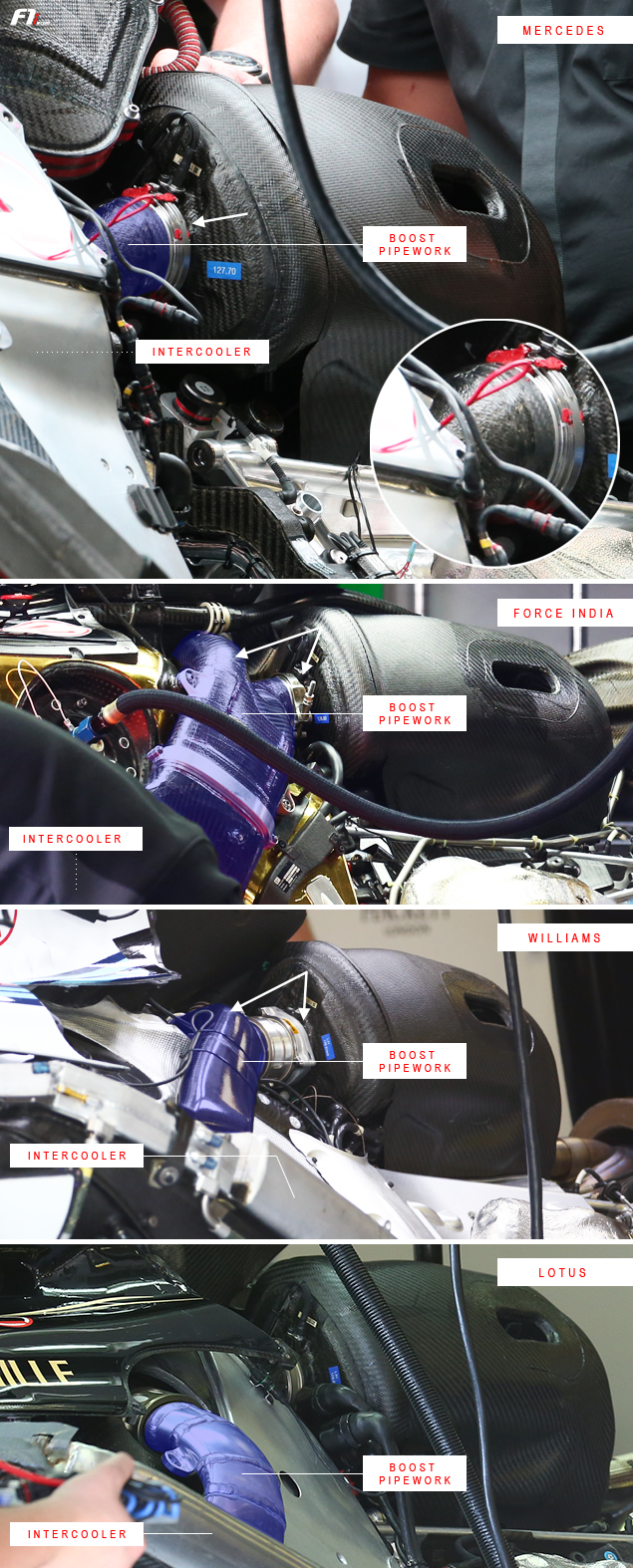IT’S ALL ABOUT ENGINE INTEGRATION
The third asset stemming from Mercedes’ power unit architecture is equally major. For starters, one will remember that Red Bull-Renault has a split-intercooler installation – with one element featuring in each sidepod – while Honda has implemented its intercooler within the left sidepod of the McLaren. Meanwhile, Mercedes’s chassis engineers from Brackley have worked hand-in-hand with their engine counterparts from Brixworth and come up with a single intercooler design, lodged within the monocoque itself (basically between the driver and the engine). This frees up some valuable space in the sidepods, which in turn limits airflow resistance. By placing its intercooler in the ‘Vee’ of the engine, Ferrari has followed the same concept of keeping the sidepods clear.
The Mercedes W06 is the only car to have the intercooler (air-to-water) straight within its carbon monocoque, which also allows having shorter boost pipework.
Compared to 2015 customer teams Williams, Force India and Lotus, Mercedes’ works outfit enjoys more leeway and time to fully optimise engine integration, thus refining and improving the car’s internal aerodynamics. The Silver Arrow is the only machine to have its intercooler (air-to-water) straight within its carbon monocoque, which also allows having shorter boost pipework.
As seen on the picture above, the Williams FW37, Force India VJM08, and Lotus E23 feature an air-to-air intercooler in their left sidepod. On all three cars, the component sits very much at the front of the internal combustion engine (ICE) in order to stay away from the heat released by the ICE and exhaust.
Consequently, the duct that channels compressed air towards the intercooler is definitely longer on these three cars than on the Mercedes. And we mentioned earlier that shorter pipework means more electric energy to boost the engine.








